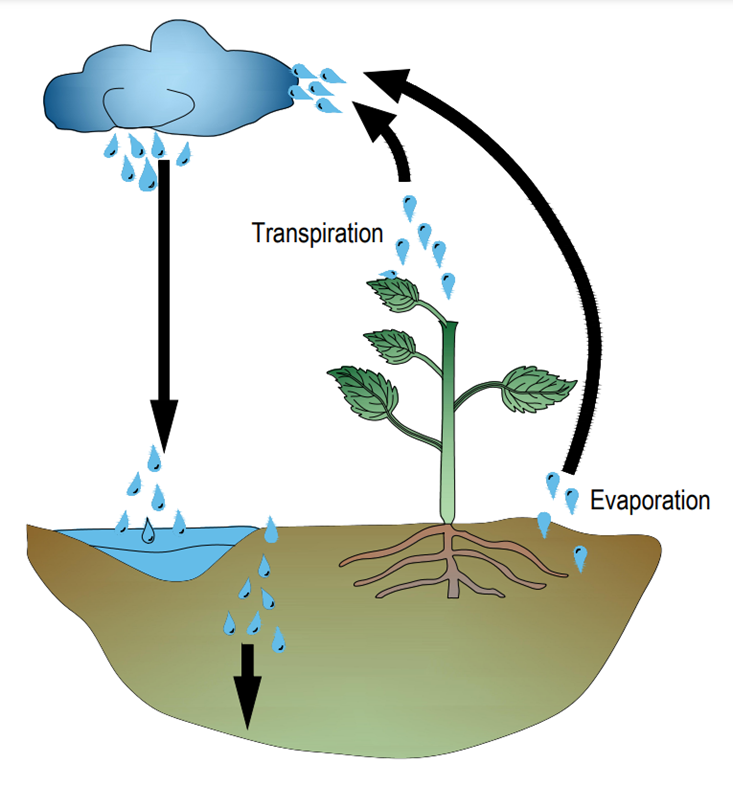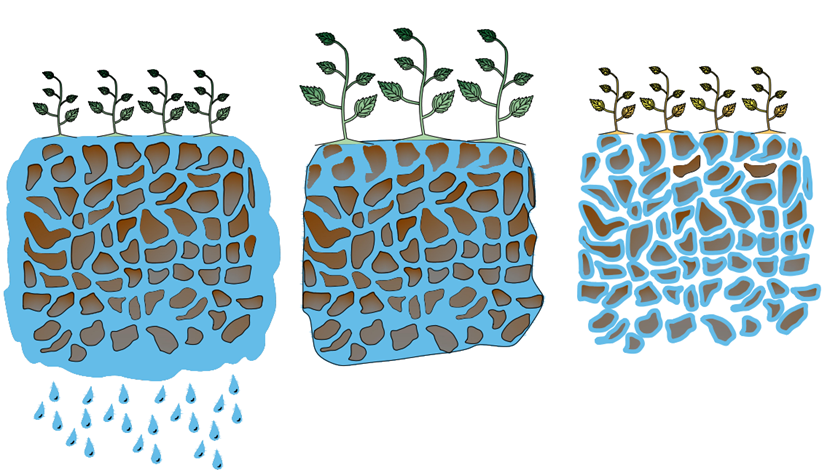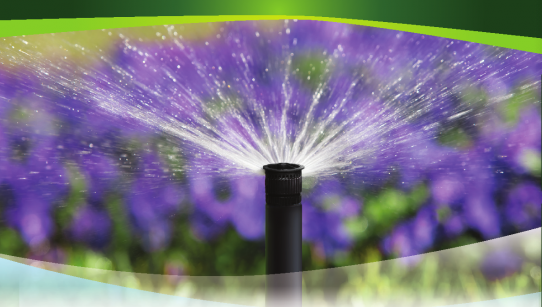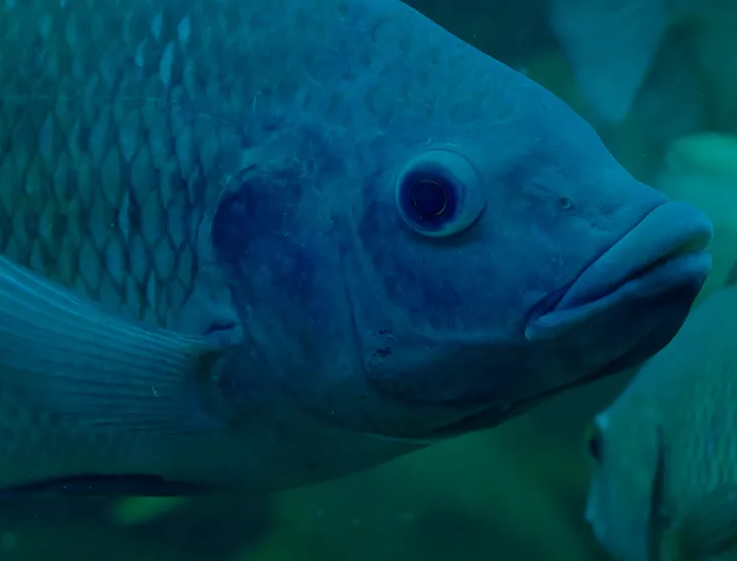All You Need to Know About Evapotranspiration
What is Evapotranspiration?
Evapotranspiration is the process by which water is lost to the atmosphere from the vegetated surface. So, it is the combination of evaporation directly from the soil surface and also transpiration from the vegetation. Transpiration is the process by which the plants will be extracting water from the soil moisture, that is the water that is present beneath the ground surface. Some amount of water is present in the soil, which is what is termed soil moisture. So roots of the plants will be extracting water from this soil moisture, the amount of water, which is extracted by the roots will be transported through the stem to the branches and from the branches to the leaves. And after that through the tiny pores, which are present in the leaves, some amount of water will be lost to the atmosphere. This loss of water from the tiny pores of the plants, tiny pores of leaves, which are present in the plants is termed the process of transpiration. So the process of evaporation from the land surface and transpiration from vegetation are collectively termed evapotranspiration, this is also termed a consumptive loss.
Factors affecting evapotranspiration
Crop factor
Crop factor includes ground cover, root density, and plant height. So if you have a lot of covers and the top of the ground so there will lot of evapotranspiration because they will be more. So larger density will extract a lot of water and that increases evapotranspiration. The plant height also influences evapotranspiration positively.
Weather factor
Weather factors are solar radiation, temperature, Humidity, Wind speed, and day length. Solar radiation increases the evapotranspiration rate, and the temperature also increases evapotranspiration. Humidity, If you have moisture around then evapotranspiration will be less and windspeed increases evapotranspiration. Wind speed increases the evapotranspiration rate and the day length which influences the temperature and solar radiation. So day length influences the evapotranspiration rate positively.
Soil Factor
Soil factors such as soil moisture, so the plant has a tendency to extract more water. Salinity holds the soil particle, so evapotranspiration will be less. The presence of an impermeable layer also influences the evapotranspiration rate, which abstracts the water flow to the plant surface.Management factor
The management factors such as mulching, shading, and weeding. The mulching and shading decrease the evapotranspiration, whereas weeding increases the evapotranspiration.
Fig.1: Evapotranspiration
Depending on the availability of moisture in the root zone or in the soil there are two terms ie, potential evapotranspiration and actual evapotranspiration.
Potential Evapotranspiration (PET) & Actual Evapotranspiration (AET)
PET would occur from the vegetated surface when there is sufficient water always available to meet the needs of vegetation. If we are providing enough water or an abundant quantity of water to the plants, the evapotranspiration taking place at that time, within the presence of an abundant quantity of water is termed potential evapotranspiration. AET is the real evapotranspiration in the particular vegetated surface, which will be less than potential evapotranspiration. Imagine a surface always there will not be an abundant quantity of water. Sometimes depending on the seasons, the water availability in the form of soil moisture will be varying. So always it will not be at a maximum level. So depending on the actual prevailing soil moisture, how much is the evapotranspiration taking place that is termed as the actual evapotranspiration.
Reference crop evapotranspiration (ETo)
ETo is the evapotranspiration rate from a reference surface with no shortage of water. A surface is considered as the referenced surface, vegetated surface will be having 8 to 15 centimeters of healthy growing green grass planted over there, from that surface with the abundant quantity of water provided, what will be the evapotranspiration taking place, that is the reference crop evapotranspiration.
Field capacity
Field capacity is the maximum amount of soil moisture, which can be stored within the soil and is termed as the field capacity. Beyond that if we are watering, again and again, that water will not be stored within the soil, it will drain out.
Permanent wilting point
It is the minimum amount of moisture that is the moisture content of soil at which the moisture is no longer available in sufficient quantity to sustain the plants. The minimum amount of moisture content is there within the soil, that is these plants will not be able to extract water at that level of moisture content. If the moisture content is reduced beyond that value, the plants will die out, because they will not be having the capability to extract water from the soil.
Available water
Available water is the difference between moisture at the field capacity and the permanent wilting point. That is the difference between the maximum amount of moisture content and the minimum which can be retained within the soil.
Consumptive Use (CU)
Consumptive use and evapotranspiration, are close terms so, but consumptive use includes water used in all of the plant processes. So rather than just transpiration as well as direct evaporation from soil and plant surface. CU exceeds ET because CU includes the other part of the water which is inside the plant surface. So, the difference between ET and CU is usually 1%.

Fig.2: Saturation, Field Capacity, Permanent wilting point.
When the moisture content in the catchment reduces to a permanent wilting point. If you are relating the potential evapotranspiration and the actual evapotranspiration, we can tell that AET/PET ≈0. Because at the moment of permanent wilting point, there will not be any evapotranspiration taking place. That will be approximately equal to zero. Actual evapotranspiration reduces to zero and the potential evapotranspiration is related to field capacity. So that ratio will be approximately equal to zero.
When the moisture content in the catchment is at field capacity, then AET = PET. Because it is having sufficient amount of moisture present in the soil. So the actual evapotranspiration will be equal to the potential evapotranspiration at the field capacity.







.png)




No comments yet